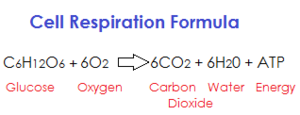5023055
B6
Descrição
Mapa Mental por Alice Hathaway, atualizado more than 1 year ago
Mais
Menos

|
Criado por Alice Hathaway
mais de 8 anos atrás
|
|
Resumo de Recurso
B6
- The Nervous System
- Central Nervous System
- Brain and spinal chord
- Coordinates a response
to a stimulus
- Stimulus e.g. bright light
- Receptor e.g. retina
- Sensory neuron
- CNS
- Motor neuron
- Effector e.g. muscle or gland
- Response e.g. pupil contracts
- Response e.g. pupil contracts
- Effector e.g. muscle or gland
- Motor neuron
- CNS
- Sensory neuron
- Receptor e.g. retina
- Stimulus e.g. bright light
- Reflex Arc
- Coordinates a response
to a stimulus
- Brain and spinal chord
- Peripheral Nervous System
- Sensory neurons and
motor neurons
- Sensory neurons: carry
impulses from the
receptors to the CNS (relay
neuron)
- Motor neurons: carry
impulses from the CNS
to effectors
- Effectors = muscles or glands
that respond to nervous impulses
- Effectors = muscles or glands
that respond to nervous impulses
- Sensory neurons: carry
impulses from the
receptors to the CNS (relay
neuron)
- Connects CNS to the body
- Sensory neurons and
motor neurons
- Central Nervous System
- Neurons and Synapses
- Neurons transmit signals around the body through
electrical impulses
- Axon: long fibre of
extended cytoplasm
surrounded by cell
membrane
- It's long so impulses are able
to travel quickly (cross less synapses)
- It's long so impulses are able
to travel quickly (cross less synapses)
- Fatty sheath:
surrounds axon;
protecting neuron and
speeding up electrical
impulses
- Branching dendrites attach
to effectors or other
neruons
- Axon: long fibre of
extended cytoplasm
surrounded by cell
membrane
- Synapses are the space between neurons
- When an impulse reaches the end of a
neuron, it triggers the vesicles to bind
to the neuron's cell membrane
- The neurotransmitter chemicals in the vesicles are
released into the synapse
- The chemicals diffuse across the synapse and bind to receptors
on the membrane of the next neuron
- When they bind, they trigger the electrical impulse to continue in the next neuron
- Only specific transmitter chemicals can
bind to receptors (like lock and key)
- When they bind, they trigger the electrical impulse to continue in the next neuron
- e.g. serotonin
- The chemicals diffuse across the synapse and bind to receptors
on the membrane of the next neuron
- The neurotransmitter chemicals in the vesicles are
released into the synapse
- When an impulse reaches the end of a
neuron, it triggers the vesicles to bind
to the neuron's cell membrane
- Drugs
- Ecstacy
- Anti-depressants
- Block sites where serotonin is removed
- Therefore increased concentration in the synapse
- Bind to receptors more often/ quicker
- Trigger more impulses in the next neuron
- Serotonin and impulses makes person feel happier :)
- Serotonin and impulses makes person feel happier :)
- Trigger more impulses in the next neuron
- Bind to receptors more often/ quicker
- Therefore increased concentration in the synapse
- Ecstacy
- Neurons transmit signals around the body through
electrical impulses
Quer criar seus próprios Mapas Mentais gratuitos com a GoConqr? Saiba mais.
